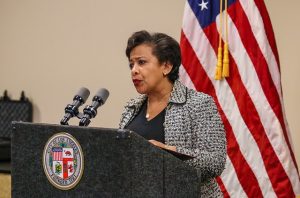
On June 22nd, the U.S. Department of Justice announced the largest Medicaid fraud bust in history. The National Health Care Fraud Takedown included 301 defendants charged, $900 million in false billings, 61 medical professionals and 29 doctors, across 36 states.
In another case, investigators in New York uncovered more than $86 million in suspected fraudulent physical and occupational therapy claims to Medicare and Medicaid. Five individuals were charged for allegedly filling a network of Brooklyn clinics with patients by paying bribes and kickbacks. The clinics were controlled by the accused, and once there, patients were subjected to medically unnecessary therapy.
These massive fraud examples are often perpetrated by sophisticated, organized schemes. There is tremendous potential to crack down on health care fraud across the U.S. if federal and state agencies work together and share information about these complex fraud takedowns.
The great thing is, this could be done without sharing data, which is often prevented by law, policy or insufficient technology. There’s nothing stopping agencies from sharing the data elements that were useful in uncovering fraud.
For instance, in the New York example, some of the abnormal things that could prompt an alert when comparing a provider to its peer group include:
- Average payment per beneficiary in the top 90th percentile
- High number of unusually large payments within a provider or clinic’s patient population.
- Average clinical severity of beneficiaries in the top 90th percentile. For example, a provider billing for a high number of urgent care procedures.
- Average treatment time in the top 90th percentile, indicating possible padding of hours
Comparing behaviors across the provider population can detect who is possibly doing something outside of the norms of their peers. A preponderance of suspicious events would help an analyst prioritize risk and focus their analysis on “the big picture”, as opposed to a single alert.
But investigators have to know that those abnormalities are good indicators of possible fraud. That’s the sort of intelligence that can be shared between agencies, without bumping into legal or policy restrictions.
I dive deeper into this topic in the recently published GovExec Route Fifty article Massive Medicaid Fraud Busts Offer Blueprint for States.
Are you a fraud investigator? What useful data elements have you uncovered that your peers should know about? Let’s use International Fraud Awareness Week as an impetus to share best practices and step up our fraud-busting strategies.
Also, if you're at the National Health Care Anti-Fraud Association Annual Training Conference, come see SAS at booth 213!
